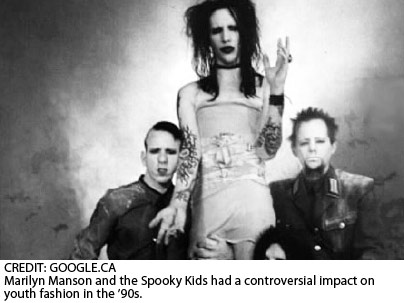Zoot: Evolution of men's apparel: Part 2

The last article reviewed the different trends in the past of men's fashions, starting with the very sophisticated look of the 1920s all the way to the technocoloured era of the '60s. Through the four decades, we saw incremental changes in men's style that were caused not only by changes in society's values and preferences, but also by political influences.
In this article, we will see the even larger changes in men's apparel through the 1970s to the 2000s. We will also see how these changes are influenced by external factors such as technology.
The 1970s took the colourful look of the '60s and revamped it by exaggerating everything. This era was best known for the bell bottom jeans and platform shoes and boots that were worn by both men and women. Tracksuits and athletic wear, including running shoes, became extremely popular with men of all ages. The trends of this decade were mainly influenced by pop culture, music and the punk and hippie revolutions. Some of the main icons include John Travolta Saturday Night Fever, Barry Manilow and David Bowie.
When the 1980s rolled in, couture fashion for men was just starting to become very popular, with designers such as Jean Paul Gaultier and Ralph Lauren creating the power suit. This was the era where brand name and image became very important as men used fashion as a way to represent their wealth. This era also had the subcultures of punk and goth where leather, ripped jeans, Dr. Martens boots, chains and studs became a huge part of the underground fashion trends usually worn by younger, rebellious males. These drastic changes in style were mainly due to the prevalence of a materialistic world and music having a strong influence on the era's subcultures.
The style of the 1990s consisted of many different subcultures. The one trend that was seen throughout all styles was the casual/street wear look that included denim jeans. This era still had the punk and gothic looks, and the "grunge" style was the newest addition. This style included band t-shirts, ripped jeans, leather boots and Converse All Stars shoes. The hippie revolution was slowly dying off and bell bottoms and platform shoes faded out of style. Music was particularly a huge influence on men's apparel, including bands like Nirvana, Marilyn Manson and Korn.
After all of the original and unique eras of men's trends, came the 2000s which was just one big mash-up of random trends. The beginning of the era was all about the minimalist look, better known as the preppy look, including argyle patterned sweaters, khakis and polo shirts. Then, as the decade progressed, trends started adopting older trends from the '50s, '60s and '70s and tweaked them to fit the current era. Some of the socalled "original" styles that came out of the 2000s were looks such as "emo" and "scene," which, in actuality, were just knock-offs of the punk, grunge and goth subcultures.
Now that all the decades from the 1920s to the 2000s have been covered, you can see that men's fashion isn't as boring and twodimensional as people often think. As society continues to change, and with all the advancements in technology, men's fashion will continue to revamp itself and never remain stagnant













